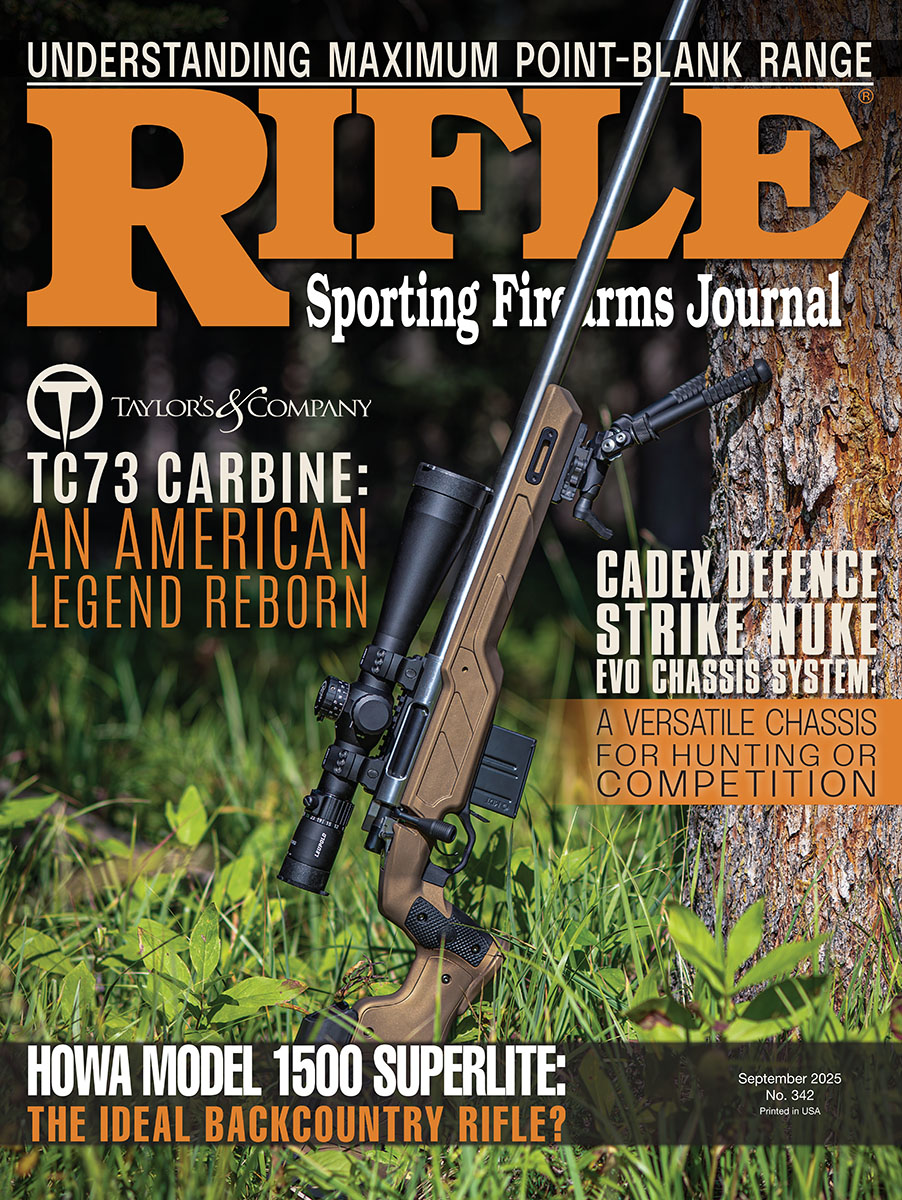Mostly Long Guns
John Taffin Tribute and KRA Customs Micrometer Receiver Sight
column By: Brian Pearce | September, 25
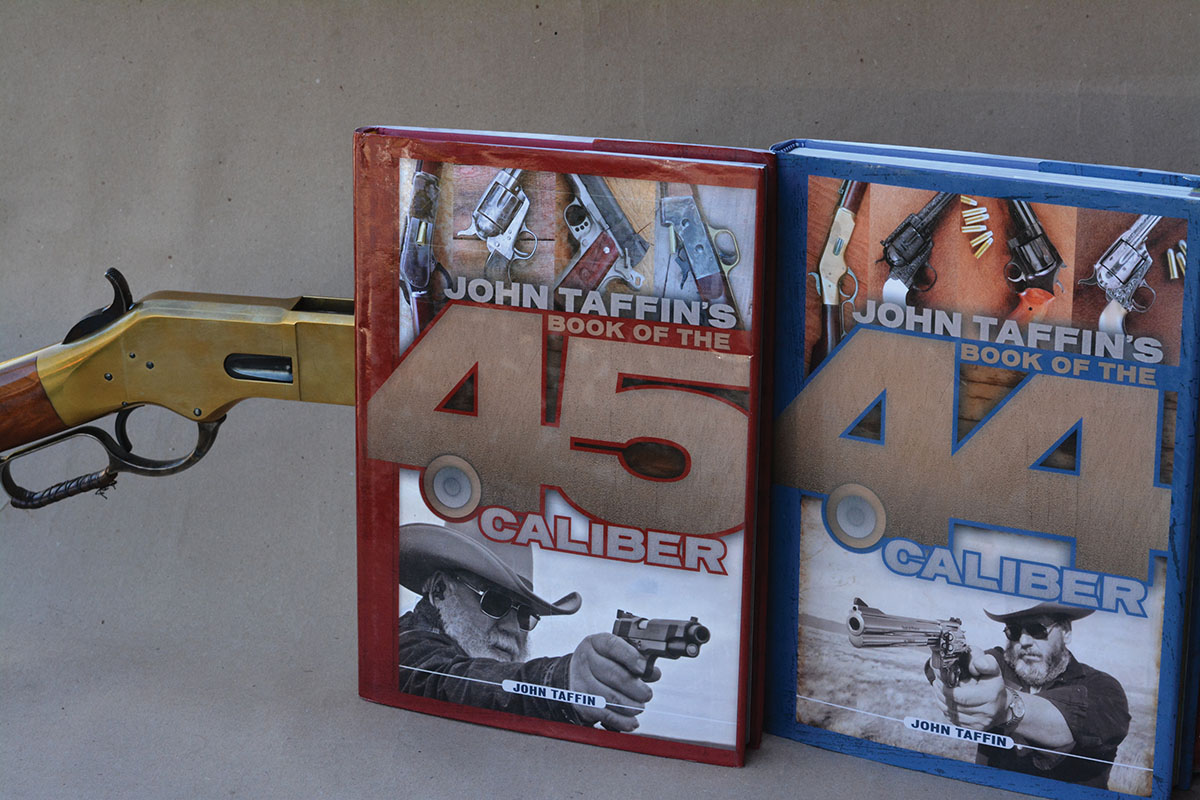
John was a close friend whom I had known for nearly 45 years! We came from completely different worlds and backgrounds; John was from Ohio with a teaching degree, and I was born in the West and raised on remote family cattle ranches. We shared the same love of great guns, handloading and shooting. On our first acquaintance, we began discussing guns and loads. It didn’t take either of us too long to realize that we could discuss handloading data, bullet mould numbers, guns and technical facts as fluently as our own names. We often traveled together, hunted together, or would spend a day in the mountains shooting a variety of guns and loads.
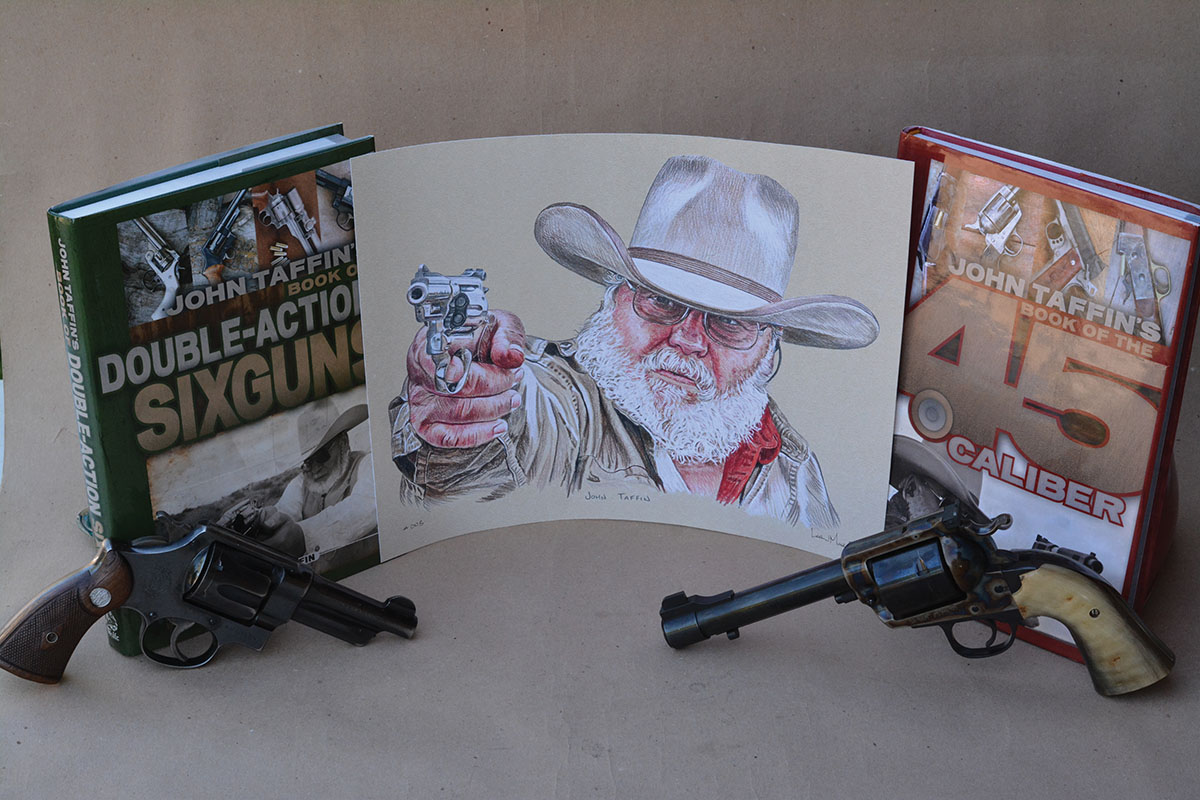
Taffin was determined to become a writer and, in 1967, authored his first article for the now-defunct GUNsport magazine. However, John’s real breakthrough occurred in 1983 when his first article was sold to GUNS magazine, and he became a staff writer the following year. In 1985, he joined their sister magazine as a staff writer.
John’s accomplishments and contributions to the shooting fraternity are extensive. For example, in July 1985, John and I traveled to Cody, Wyoming, to visit inventor and six-gun pioneer John Linebaugh. With inspiration from that trip, Taffin soon sent out a query letter to a few select shooters regarding a hypothetical gathering wherein you could only bring two guns. However, that special event became a reality in June 1986 in the form of The Shootist Holiday held in Freedom, Wyoming, but is now held annually at the NRA Whittington Center in Raton, New Mexico. John served as Chairman for many years, while The Shootist and many of its members have become very influential in the firearms industry. For several years, Taffin served as Chairman of the famous Outstanding American Handgunner Awards Foundation, an award that he certainly deserved.
In addition to authoring thousands of articles, he has written an amazing 10 books! His first, Big Bore Sixguns, was published in 1997 and is considered a classic today. While John is probably best known for his love of big-bore sixguns, he also wrote extensively about rifles, but especially lever actions. Several of his books are now out of print; however, Wolfe Publishing is currently offering four of his books, including John Taffin’s Book of the .44 Caliber, John Taffin’s Book of the .45 Caliber, John Taffin’s Book of Double-Action Sixguns and John Taffin’s Book of Small-Bore Sixguns, Semiautomatics and Single-Shots. However, I’m pleased to mention that a fifth and final book is currently in production at Wolfe Publishing Company, and will be available soon. These books are constructed of high-quality paper, have full-color photos, excellent layouts and are 100 percent printed in the USA, and are a great addition to any shooter’s library.
John learned how to balance life between family, work, friends, community, God and church and in later years his grandchildren. He would smile, and his eyes would light up when he talked about the grandkids who just called him “Papa” and the joy they brought him. Incidentally, John said many times that without his wife Dot’s continual support and encouragement, he would never have been able to accomplish the work he did. Thank you, Dot!
John was honest as the day is long. If he said that he tested a gun, then he did. If a gun produced a given level of accuracy, reliability and performance, then it did. I was there as he tested many guns, and he was always a straight shooter (pun intended) when reviewing each one.
After retiring from teaching in 1995, John had the time required to write books. However, to him, it was not work. He loved guns and shooting; they were his passion. He enjoyed sharing his knowledge and experience, and he appreciated those who read his articles. He worked until the age of 84, when health issues forced him to retire. John was a rare individual, a special friend, and will be remembered for his kindness to others, his wit and his love for good guns.
KRA Customs Micrometer Receiver Sight
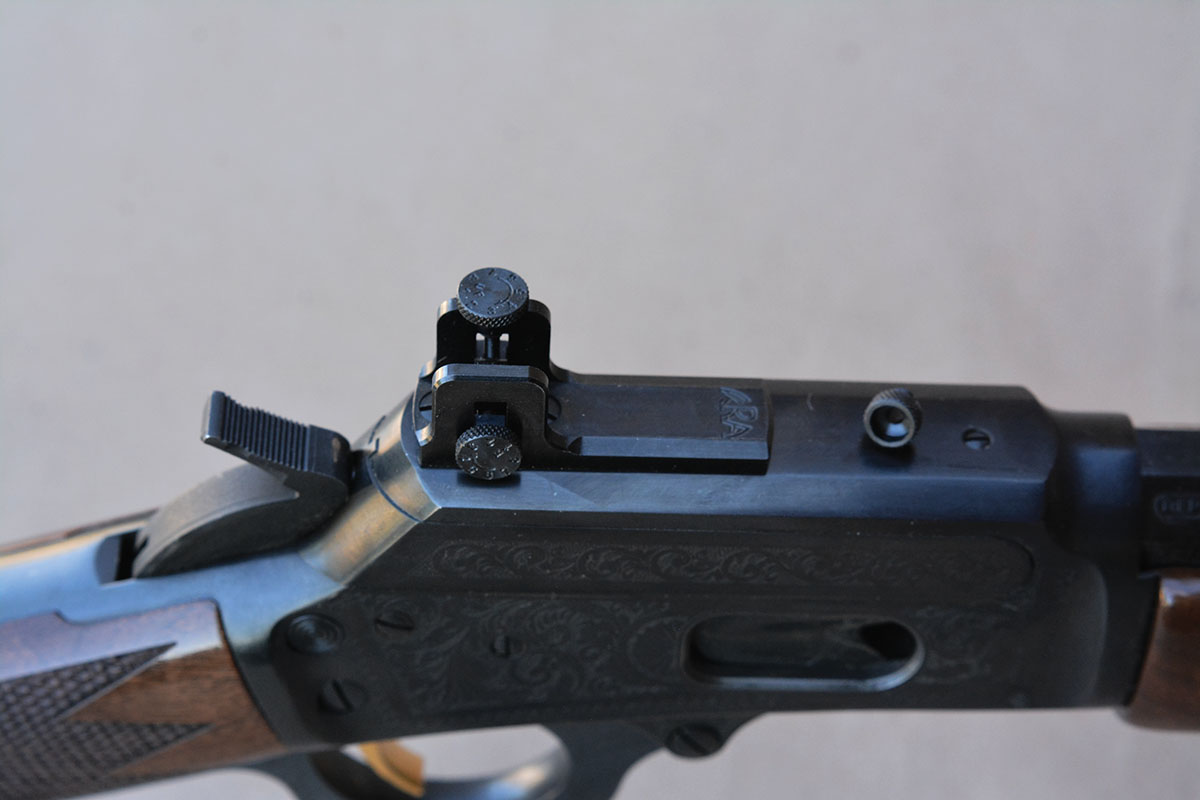
The aperture sight, also known as a peep sight, is a truly remarkable device. Those who have not used them often feel uncomfortable at first. I might suggest installing one on a rimfire rifle and then shooting and practicing until the advantages become apparent and confidence is established. Odds are they will become a favorite sight system on traditional rifles, such as lever guns.
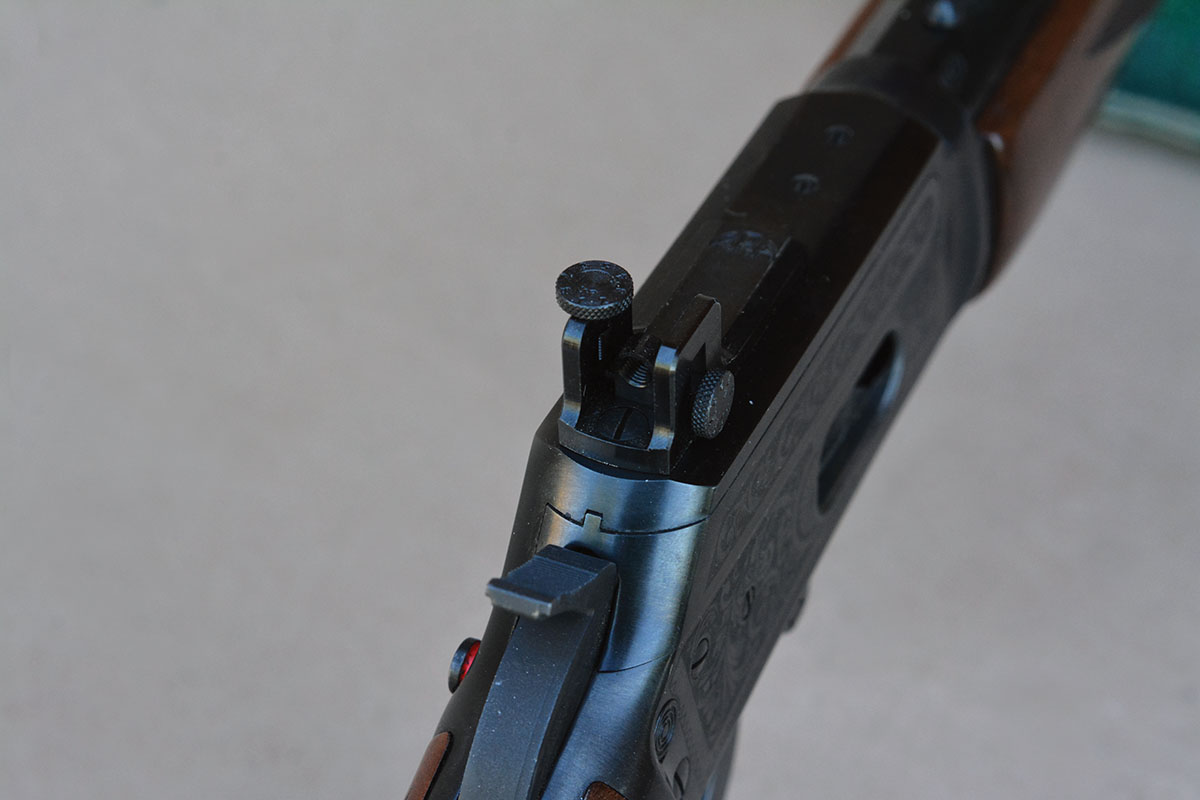
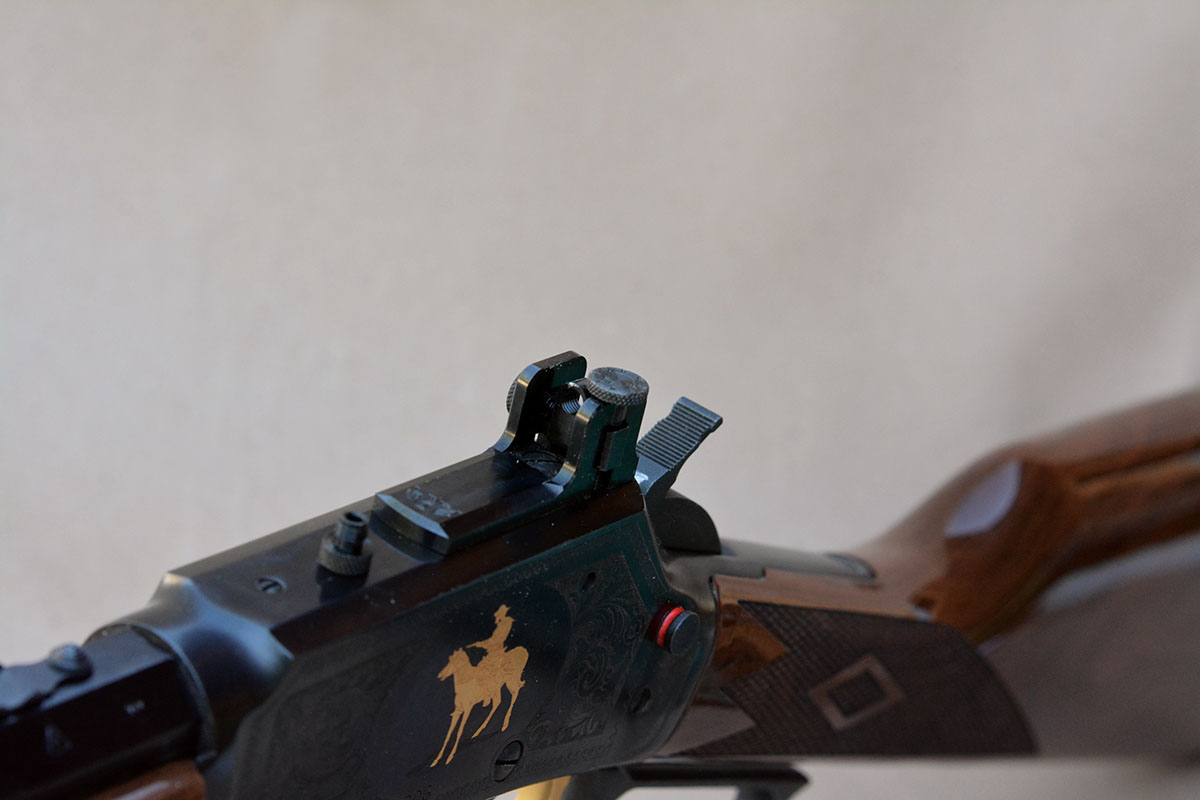
Aperture sights were popular during the 1800s with hunters and target shooters. As early as 1890, Townsend Whelen used one on his Remington single-shot 22 and learned its value and virtues. In 1903, while serving as a Lieutenant in the U.S. Army, Whelen had his men’s Krag-Jørgensen rifles fitted with aperture sights. They won the Army rifle competition that year and were the only ones using peep sights! Aperture sights have become standard on many military rifles, including the M16, because they work so well under a variety of conditions and targets.
The KRA Micrometer Receiver Sight is unique. It is machined from solid-steel bar stock and is hot-tank blued. It features a ghost ring aperture with a .160 inch threaded hole; however, it comes standard with .093 inch aperture that screws into the ghost ring that adds to the versatility. There are two protective wings on each side of the sight and there are two micrometer click adjustable knobs that serve to make elevation and windage adjustments that are numbered 1 through 8 for reference. They are finger adjustable, so no tools are required, and there is a locking cap to prevent the micrometer adjustments knob from moving when used in the field or under hard conditions. Naturally, the point of impact shifts with each micrometer click and is dependent on the length of the barrel, or rather, the sight radius. With a typical carbine with a 20-inch barrel, such as the Marlin 1894 Limited Carbine used to evaluate this sight, the sight radius is approximately 22 inches. One click will move the point of impact approximately .365 inch at 100 yards. Incidentally, the KRA sight weighs just 497 grains or 1.13 ounces.
In working with the KRA sight on a Marlin 1894 Carbine Limited in 45 Colt, it worked flawlessly. Adjustments were positive, and using the .093-inch aperture installed, I was able to walk the bullets’ point of impact (with predictability) to dead-center at 75 yards.
KRA Customs is located in Moyie Springs, Idaho, and is 100% built in the USA. They offer a 30-day money-back guarantee and a lifetime warranty. For more information, go to kracustoms.com or email [email protected].


